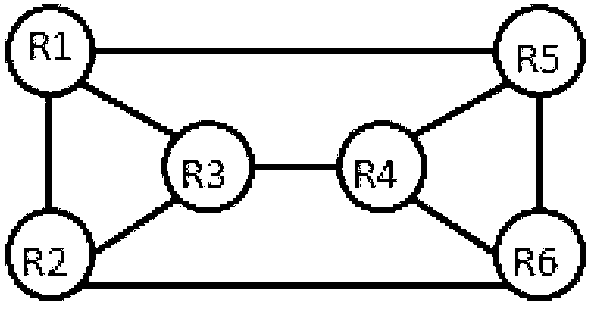Shortest path tree and spanning tree combined energy-saving routing method
A shortest path tree and spanning tree technology, applied in digital transmission systems, electrical components, transmission systems, etc., can solve the problems of not considering energy consumption, low network load, and low link utilization.
- Summary
- Abstract
- Description
- Claims
- Application Information
AI Technical Summary
Problems solved by technology
Method used
Image
Examples
Embodiment Construction
[0027] like Figure 1.1 As shown, an extreme case of the contradiction between energy saving efficiency and network resilience is when all links are in the working state. At this time, the network consumes the most energy, but it is also the most reliable and resilient, and can cope with sudden traffic spikes and link failures. For another extreme case see Figure 1.2 All links on a connected subgraph containing all nodes are in working state, and other links are in dormant state. If the online subgraph is taken as a spanning tree, the energy-saving efficiency of the network is the highest at this time, but it is also the most vulnerable. A well-considered energy-saving routing protocol should not only consider energy-saving efficiency, but also fully consider network resilience and global network performance. Furthermore, because link-state switching is based on real-time traffic demands, our energy-efficient routing protocol needs to be able to make decisions quickly and ma...
PUM
 Login to View More
Login to View More Abstract
Description
Claims
Application Information
 Login to View More
Login to View More - R&D
- Intellectual Property
- Life Sciences
- Materials
- Tech Scout
- Unparalleled Data Quality
- Higher Quality Content
- 60% Fewer Hallucinations
Browse by: Latest US Patents, China's latest patents, Technical Efficacy Thesaurus, Application Domain, Technology Topic, Popular Technical Reports.
© 2025 PatSnap. All rights reserved.Legal|Privacy policy|Modern Slavery Act Transparency Statement|Sitemap|About US| Contact US: help@patsnap.com



